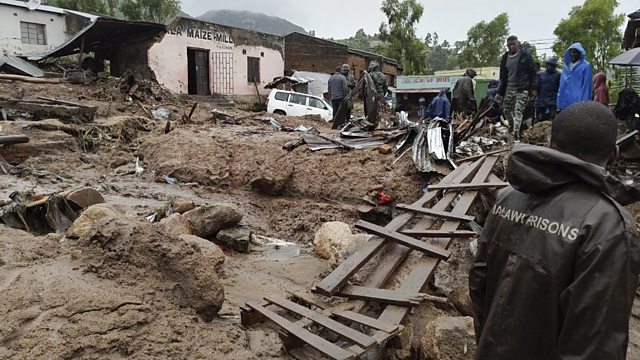Return of Cyclone Freddy
34 days after it first formed at the far end of the Indian Ocean, record-breaking Cyclone Freddy made a repeat landfall over Mozambique, bringing further destruction to the region
34 days after it first formed at the far end of the Indian Ocean, record-breaking Cyclone Freddy made a repeat landfall on Mozambique as well as passing over Malawi, causing extensive damage and loss of life. Climate scientists Liz Stephens and Izidine Pinto join Roland to give an update on the destruction and explain how Cyclone Freddy kept going for an exceptionally long time.
At the Third International Human Genome Summit in London last week, Professor Katsuhiko Hayashi announced he had created baby mice from eggs formed by male mouse cells. Dr Nitzan Gonen explains the underlying science, whilst Professor Hank Greely discusses the ethics and future prospects.
And from one rodent story to another, SARS-CoV-2 has been detected in brown rats scurrying around New York sewers. Dr Thomas DeLiberto from the US Department of Agriculture gives Roland the details.
When imagining a robot, a hard-edged, boxy, humanoid figure may spring to mind. But that is about to change.
CrowdScience presenter Alex Lathbridge is on a mission to meet the robots that bend the rules of conventionality. Inspired by how creatures like us have evolved to move, some roboticists are looking to nature to design the next generation of machines. And that means making them softer. But just how soft can a robot really be?
Join Alex as he goes on a wild adventure to answer this question from listener Sarah. He begins his quest at the ‘Hello, Robot’ Exhibition at the Vitra Design Museum in Weil am Rhein, Germany to define what a robot actually is. Amelie Klein, the exhibition curator, states anything can be a robot as long as three specific criteria are met (including a cute cuddly baby seal). With this in mind, Alex meets Professor Andrew Conn from the Bristol Robotics Lab who demonstrates how soft materials like rubber are perfect contenders for machine design as they are tough to break and - importantly for our listener’s question - bendy.
Alex is then thrown into a world of robots that completely change his idea of what machines are. He is shown how conventionally ‘hard’ machines are being modified with touches of softness to totally upgrade what they can do, including flexible ‘muscles’ for robot skeletons and silicon-joined human-like hands at the Soft Robotics Lab run by Professor Robert Katzschmann at ETH Zurich. He is then introduced to robots that are completely soft. Based on natural structures like elephant trunks and slithering snakes, these designs give robots completely new functions, such as the ability to delicately pick fruit and assist with search and rescue operations after earthquakes. Finally, Alex is presented with the idea that, in the future, a robot could be made of materials that are so soft, no trace of machine would remain after its use...
Image credit: Jack McBrams/Getty Images
Producer: Roland Pease
Assistant Producer: Sophie Ormiston
Last on
More episodes
Broadcasts
- Sat 18 Mar 2023 23:06GMT91�ȱ� World Service South Asia
- Sun 19 Mar 2023 00:06GMT91�ȱ� World Service East Asia
- Sun 19 Mar 2023 01:06GMT91�ȱ� World Service except East Asia & South Asia
Podcast
-
![]()
Unexpected Elements
The news you know, the science you don't


